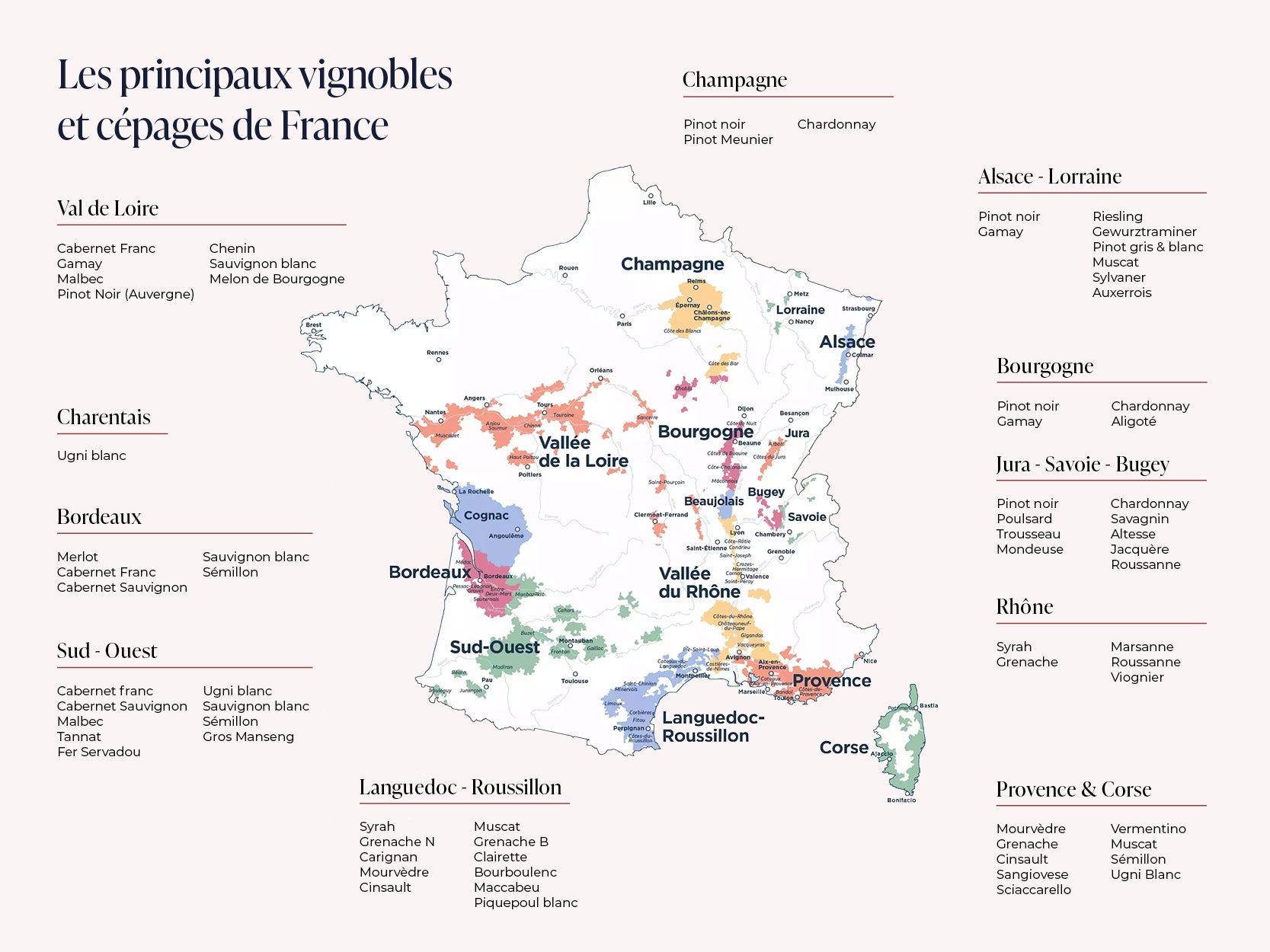Appellation
The name of a wine refers to the Protected Designation of Origin (PDO). This European label recognises and protects both the terroir and the know-how behind the production of certain wines. The wine AOC has been in force since 2009, and there are now 383 different appellations in France.
Appellation means production restrictions!
A closer look at the official definition of a protected designation of origin:

"European certification designed to protect the name of certain agricultural products produced in a defined geographical area using specific traditional know-how."
This appellation is a "quality and origin identification symbol" issued by the National Institut of Origin and Quality.. It therefore implies various constraints governed by strict specifications, regarding:
- the soil (plots of land and communes where the vines are grown, as well as where the wine is made and aged),
- the grape varieties, the main grape varieties authorised in the wine, whether white, red or rosé,
- the production, maximum volume of wine authorised to be produced per hectare of vines,
- the ageing period of the wine
- wine-making practices (planting and pruning of vines, vineyard irrigation, etc.),
- the harvest (technical parameters, grape maturity, etc.).
A brief history of the protected designation of origin
The beginnings of the PDO appeared in France in 1905 to combat fraud in wine production following the devastation of vineyards by the phylloxera parasite.
To regulate the alcohol market, the French label AOC, "appellation d'origine contrôlée", was created in 1935, initially for wines and spirits. The first wine AOCs were created on 15 May 1936: Arbois, Châteauneuf-du-Pape, Cassis, Monbazillac and Tavel. The need for uniformity and recognition of designations in Europe led to a reform of the Common Organisation of Agricultural Markets (COM) and the creation of the PDO label in 1992. The European equivalent of the AOC, it has applied to wines since 2009.
💡 The AOP applies equally to red, white and rosé wines.
PDO and PGI... What's the difference?
PGI stands for "Protected Indication of Origin", a European designation created in 1992 and applied to wine in 2009. There are currently 75 PGI wines. Along with AOP wines, they are part of the GI (geographical indication) wines, a general designation that distinguishes them from wines without a geographical indication, known as vins de France.
The PDO refers to the terroir and know-how, the PGI refers only to the terroir of the vineyard. More ''flexible'', this appellation allows greater freedom in the cultivation of the vines and the production of the wines.
List of wine appellations
Every French wine-producing region has its own AOP wines. There are almost 400 in all, spread across 80 départements and 16 main vineyards : Alsace, Bordeaux, Beaujolais, Burgundy, Bugey, Champagne, Corsica, Jura, Languedoc, Lorraine, Loire Valley, Provence, Roussillon, Rhône Valley, Savoie and South-West.
Case of the burgundy vineyards
This region has 84 appellations divided into 4 levels:
- regional appellations,
- communal appellations, or "AOC villages", superior quality wines,
- premiers crus,
- grands crus, top-quality AOC wines.
Case of bordeaux vineyards
The hierarchy of appellations is similar to that of Burgundy:
- 2 regional appellations, AOC Bordeaux and AOC Bordeaux Supérieur (or Crémant de Bordeaux),
- communal appellations for wines produced on the left bank (Sauternes, Margaux, Pauillac, etc.),
- communal appellations for wines produced on the right bank (Pomerol, Saint-Émilion, etc.).

